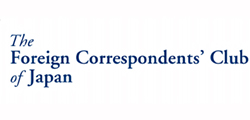Press Conference: Japan's Standoff with China Over Taiwan
Thursday, January 08, 2026, 11:00 - 12:00
PRESS CONFERENCE Japan's Standoff with China Over Taiwan Masayuki Masuda, National Institute for Defense Studies, Head of China Division John Chuan Tiong Lim, Research fellow, Institute for Advanced Studies on Asia, Tokyo University 11:00-12:00 Thursday, January 8, 2026 Language: The speech and Q & A...









